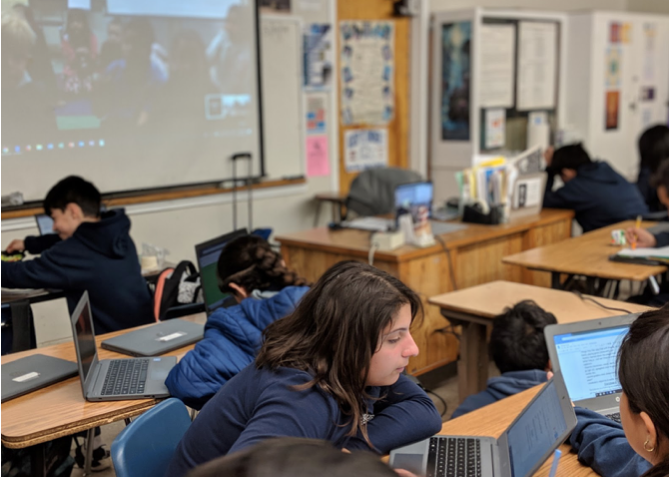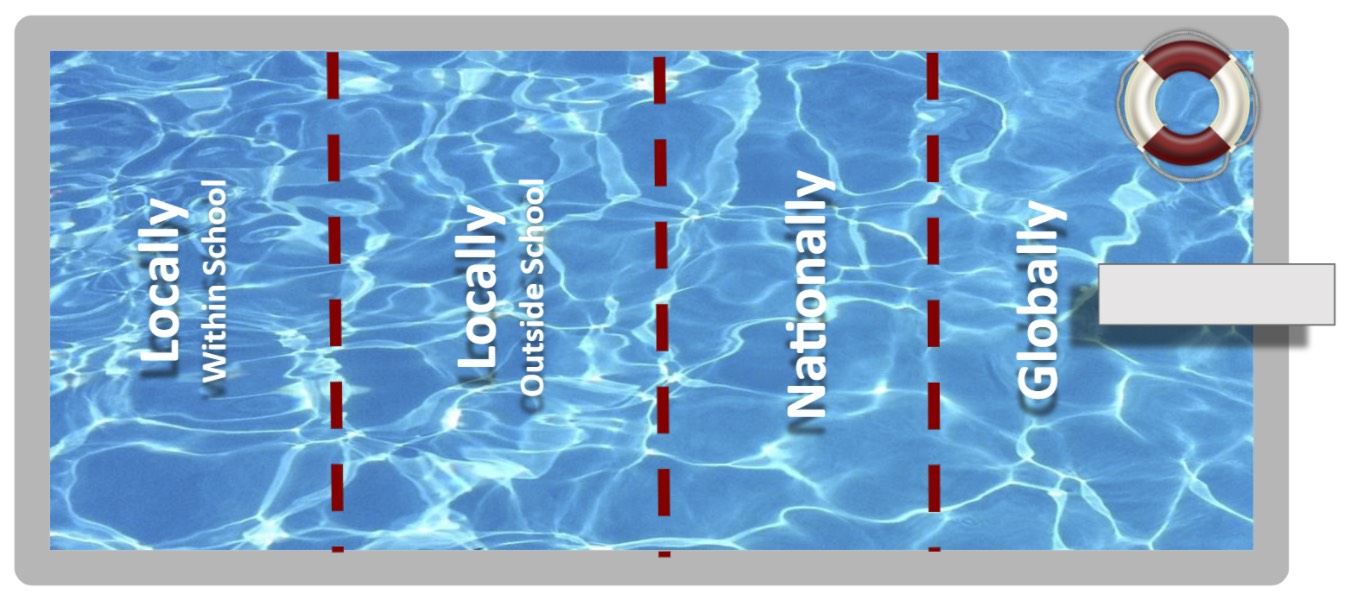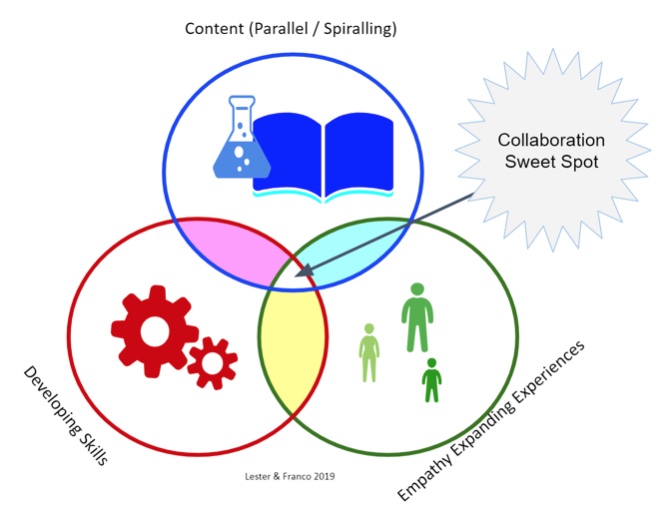- Los Angeles Unified School District
- Spotlight Articles
Cultivating Global Collaborator Communities
Cultivating Global Collaborator Communities
By Elizabeth Lester, Madison Middle SchoolMaria Franco, Coldwater Canyon Elementary School

Collaboration is the foundation of every society. Being able to share what one understands with others is imperative to social growth. In addition, when we collaborate we see new perspectives and generate new ideas further contributing to personal and social growth.
The International Society on Technology in Education (ISTE) defines global collaboration as the use of digital tools to broaden students’ perspectives and enrich their learning by collaborating with others and working effectively in teams locally and globally (ISTE Student Standard 7). To get in the mindset of global collaboration, take a moment to reflect on how you and your students have used, or can use, digital tools to connect with learners from a variety of backgrounds and cultures, engaging with them in ways that broaden mutual understanding and learning (ISTE Student Standard 7a). Reflect on how these types of experiences enrich the student learning to set the stage for being intentional in cultivating global collaboration opportunities.
As we look at global collaboration, one thing we need to consider is that global collaboration can be viewed as a spectrum. Imagine a swimming pool, at the shallow you will find local collaboration. These are collaboration experiences that we engage in with teachers and students at our school, in our local network or with local community members. These types of collaborations are at the shallow end of the pool because they can be planned and facilitated rather quickly since many of the times we already have established professional relationships with these individuals. Oftentimes, these are collaborations that feel comfortable as we can feel the safety of the bottom of the pool beneath us through familiarity with the teachers and the students.

As we move towards the deeper end of the pool, we find national and global collaborations. These experiences are at the deeper end because they require us to seek and participate in networks and educational organizations outside of our community. Leveraging collaboration platforms, being active on Twitter, and participating in conferences provide us with the opportunity to expand our network and open the door to more global learning experiences for our students and ourselves. Regardless of what part of the pool you want to swim in, opportunities for collaboration will always promote learning.
Second Grade Educational Games is an example of a local collaboration experience done between an elementary 2nd grade and a 6th grade middle school history/computer science teacher. The middle school teacher set up the collaboration experience as a way to help the 6th grade students reinforce their history content and computer science skills by providing them an opportunity to design games the younger students would use to practice their classroom learning. The 6th grade students had to focus on content the students were learning at both grade levels, interview their “client” through ongoing design conversations and adjust based on product feedback.
Global collaboration brings opportunities to engage students in modern day learning. It also inspires curiosity, problem-solving and student agency. Often we go into collaborations by finding a person, organization or class that we want to work with and then we develop a project to engage our students. We have found that when a collaboration is approached in this manner, the content can take a back seat to the student interactions.
Through planning for intentional collaborations, we always start with the instructional goals. Instructional goals fall into three categories. Content, Skills and Empathy Experiences.

Content is the most obvious of the areas when thinking about instructional focus. When thinking about leading with content, start with content that will benefit by having students collaborate during the learning process. Look for where the content is being taught in parallel, these are other classes/teachers/areas that are learning the same or similar content. Alternatively, look where the content is sprialled. This is where the same concepts are taught in different grades at a different depth level. We saw an example of spiralled content in the Second Grade Educational Games collaboration.
If we have started with content, we can narrow down our collaboration pool by looking at what skills we want to have our students develop or practice. These can be skills like language (speaking, listening, grammar), math sense, cross cutting concepts, and many more. In the example of the Second Grade Educational Games collaboration, the skills the students were practicing were their listening and academic language skills. Students on both sides of the collaboration had to practice listening and speaking in order to get to a common understanding of what the ideal game would be for the content.
The third instructional area is providing learning opportunities that expand our students empathy building experiences.These are situations that allow students to be exposed to new cultures, communities, ideas or be reminded of how another group of people think. These can include opportunities to work with different socio-economic groups, learning ability groups (English Language Learners, Special Education, GATE), racial groups, urban/suburban/rural experiences and, of course, whole new cultures as we move deeper into the pool.
The collaboration sweet spot is when we have developed a plan to have students experience all three instructional focuses in one project. However, this is not a necessity, but something to strive for when designing a learning experience. In the Second Grade Educational Games collaboration, we had two components (content and skills) since the collaboration was a local collaboration between two schools in the same neighborhood. A similar collaboration could be done between two schools with different populations of students which could bring in a level of empathy expanding experiences for both student populations.
Once you have your instructional goals, it is time to begin to identify the appropriate group or individual to collaborate. It is essential to lead with why this collaboration is beneficial for learning. Focus on being able to finish the statement “I can collaborate with… because…” The because should fall into how the collaboration will benefit student learning around your identified instructional goals. Consider the community at all parts of the spectrum when you are thinking about collaborators: local, national and global. As you meet people or groups that you can collaborate with for future projects, keep a record of their information and the “because” portion of how they can support your students' learning.
As you begin to plan your next collaboration opportunity, remember it is not about addressing all three instructional goals every time. It is about working towards opportunities during the year to have collaborations that touch on all three. We have found that it is through using this thinking process that we are able to build collaboration opportunities for students that lead with instruction giving students structure to connect with their collaboration partners at a deeper level and more consistently.

